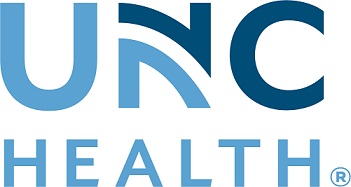Newswise — CHAPEL HILL – Across North Carolina, the risk of death from the most common form of acute leukemia in adults was significantly higher in three regions, researchers from the University of North Carolina Lineberger Comprehensive Cancer Center found.
In a retrospective study published in the journal Cancer, researchers report that adults treated with chemotherapy in the hospital for acute myeloid leukemia, or AML, between 2003 to 2009 had a statistically significant higher risk of death if they lived in northeastern North Carolina from Wilson to Roanoke Rapids, in a region around Greenville, and a region around Wake County, including Durham County. Those differences remained even after researchers controlled for other factors that might help drive the increases.
“The geographic survival disparities we found could not be explained by other sociodemographic variables or proximity to experienced treating facilities,” said the study’s first author Ashley Freeman, MD, a clinical fellow in the UNC School of Medicine Division of Hematology and Oncology. “This raises the possibility that more complex features of the local health care infrastructure, including provider referral and practice patterns, are affecting patient outcomes.”
Overall across the United States, survival rates have improved for AML since 1975, with about 27 percent of patients living five years, according to data from the NCI Surveillance, Epidemiology and End Results Program. However, incidence of the disease has been rising in the last decade. Researchers have seen survival differences by race and insurance type, and at UNC Linebeger, researchers wanted to investigate whether survival also varied based on where patients were living in North Carolina at the time of their diagnosis.
To study death rates from the cancer across North Carolina, researchers analyzed data for 900 adults diagnosed with AML between 2003 and 2009. They used the UNC Lineberger Integrated Cancer Information and Surveillance System, a database that links claims insurance claims information to a state information database called the N.C. Cancer Registry.
They assessed the risk of death in nine regions defined by the North Carolina Area Health Education Centers (AHEC) Program, a program established in 1972 to address physician shortages and the uneven distribution of health care services in North Carolina.
“We looked at geographic disparities because we are trying to improve outcomes for all citizens in North Carolina, consistent with the mission of our cancer center,” said William A. Wood, MD, a UNC Lineberger member and associate professor in the UNC School of Medicine Division of Hematology and Oncology. “We are also trying to find situations in which disparities shouldn’t exist, but do, for arbitrary reasons – such as where a patient happens to live – so that we can figure out how to improve equity across the state.”
The researchers determined that a region around Greensboro had the lowest risk of death for AML patients who received chemotherapy treatment in a hospital. Compared to the Greensboro region, they found the risk of death was four times higher in an area of northeastern North Carolina that included Roanoke Rapids, Rocky Mount and Wilson – the highest in the state. The risk was more than two times greater in the eastern region of the state around Greenville, and nearly twice as high in the region around Wake County.
“There are areas of the state where there is an elevated mortality, and we need to better understand the factors that are driving that – whether they’re environmental, patient or provider-related,” said study co-author Anne-Marie Meyer, PhD, a UNC Lineberger member, the director of ICISS and professor in the UNC Gillings School of Global Public Health.
Nearly half of patients in the study received their care at hospitals not affiliated with one of the state’s three National Cancer Institute comprehensive cancer centers. The researchers did not find a statistically significant link between the distance from the home of patients to their treating facility or nearest NCI-designated center and risk of death when they controlled for region. There was also not a link between higher risk of death at one year for treatment at an NCI-designated cancer center versus at a different treatment center.
There were regional differences in health care resources, Freeman said. “Area L,” which is the name for the region in northeastern North Carolina that spans from Wilson to Roanoke Rapids, for example, has some of the lowest proportion of general practitioner physicians and radiation oncologists, as well as the highest burden of disease. They did find that patients with a more serious prognosis were more likely to be treated an NCI-designated comprehensive cancer center.
But the reasons are not clear why the disparities continued even after researchers controlled for regional factors like poverty or education, Wood said. The researchers believe other factors could be involved, such as the providers’ experience with treating rare or complex diseases or how supportive care is delivered. Although there was not a significant association between treatment at an NCI-designated center and survival, there may be other features of treatment facilities, such as patient volume and academic affiliation that are important for patient outcomes. The next step is to identify those factors and then develop programs to try to close the gaps, he said.
“The message here is that acute myeloid leukemia is representative of diseases that are uncommon, involve high complexity care, and have high risk for morbidity and mortality,” Wood said. “If we can figure out how to coordinate and improve delivery of effective interventions for this disease throughout the state of North Carolina, then we may be able to develop a model for improving outcomes in many other diseases throughout the state as well.”
In addition to Freeman, Meyer and Wood, other authors include: Andrew B. Smitherman, Lei Zhou, Ethan M. Basch, and Thomas C. Shea.
The study was supported by UNC Lineberger.
